Sunday Apr 20, 2025
Sunday Apr 20, 2025
Tuesday, 3 December 2024 14:32 - - {{hitsCtrl.values.hits}}
By Great Place To Work® in Sri Lanka
“The best thermometer to the progress of a nation is its treatment of its women", noted Swami Vivekananda, a renowned Indian philosopher.
In Sri Lanka, women make up 51.9% of the population, yet their labor force participation is only 29.6% (Department of Census and Statistics Q1 2024), significantly below the global average. This gender gap is not only a social issue but also a missed economic opportunity, as research shows that gender diversity can enhance economic performance by 20-35%.
The 2024 Great Place to Work® Sri Lanka study provides valuable insights into how Sri Lankan organizations can foster more inclusive workplaces. By embracing the recommendations outlined in the study, companies can improve women's well-being, fuel innovation, and drive economic growth—leading to a more equitable and prosperous future for all.
Study Summary
The study was conducted by assessing over 80,000 employees at an 85% response rate across 150 organizations in Sri Lanka from Sep 2023 to Jun 2024. Data from 26,000 Female respondents to the anonymous survey were used in the study and in selecting the 15 Best Workplaces™ for Women.
While the study represented 15 key industries, the 15 Best Workplaces™ represented 7 industries of which 33% from Manufacturing & Production as well as another 20% were from the Professional Services sector. 13% each from both IT and IT enabled services sector and Plantations (Agriculture, Forestry, Fishing, Plantations) industries.
The size of the employee cadre among the Best 15 extended from 72 employees to 4,373 employees, with the majority (33%) being among the 501-750 employee range. The percentage of women in organizations among the Best 15 ranged from 32% to 90% with the average being 56% of the workforce.
Methodology for Selecting the Best Workplaces™ for Women
The Great Place to Work® model used to assess Best Workplaces™ is based on two lenses; Firstly, the Trust Index© employee perception survey is conducted to understand the employee workplace experience. Organizations are measured on whether employees Trust the people they work for, have Pride in work they do and share Camaraderie among people they work with. Secondly, the practices and processes in place to drive the employee experience are evaluated through a central submission termed the Culture Audit©. Where necessary, results are audited to maintain validity of inclusion in Best Workplaces™ List.
In addition, considering the challenges women face due to their intensive contribution within the family unit, priority is given to selected areas – SHE ROCKS. A framework to measure great workplaces for women:
nSupporting through creation of women friendly policies
nHiring for diversity and special programs for returning women
n Equal pay and promotions
nRejoice and Celebrate successes
nOrientation on Unconscious Bias
nContinuously Inspire
nKnowledge & Growth Opportunities
nStress-free workplace environment
Participating organizations are assessed to understand how they support, enable and empower women in their workforce to create a positive workplace experience.
Eligibility Criteria:
nOrganizations with at least 20 Women with at least 10% of the workforce represented by female employees. The finalists selected may have a higher percentage.
nParticipating organizations should meet the minimum qualifying criteria for being Great Place to Work-Certified™ for list eligibility (Trust Index© average score > 69.5%).
nThe organizations must have separately submitted detailed practices on areas requested specifically for the Best Workplaces™ for Women evaluation.
Evaluation Criteria:
nA minimum 70% positive perception for female employees
nRepresentation of women in the organization and hierarchy.
nScore gained in relevant additional Culture Audit™ submission practices.
nInformation that showcased practices and a variety of benefits that would facilitate inclusiveness of women in the workplace.
55% weightage was given to the female experience through the survey and 45% weightage was given to the people practices submission.
Methodology for Selecting the Best Workplaces™ for Women
Areas covered in Women specific Culture Audit™ submission.
nInitiatives aimed at identifying and catering to special needs of female employees (Example: - nursing, childcare, work life balance).
nHiring practices focused on improving gender diversity.
nPrograms that facilitate education, professional development, and career progression of female employees
nPractices aimed at retaining female employees (example: maternity leave, telecommuting, sabbaticals, unpaid career breaks etc.)
nHow women can utilize organization’s grievance redressal process to raise concerns and measures in place to action out (Example: - actions/ steps taken in the past, code of conduct, awareness sessions around diversity & respect).
nFair compensation processes (Example: - equal pay audits)
Results Overview
TRUST INDEX© COMPARISON FOR 2024
The Trust Index®, a composite measure of employee perceptions across 5 aspects in the organization: credibility, respect, fairness, pride, and camaraderie reflecting the relationships between management and employees, employees and their work, and employees with each other.
The "15 Best Workplaces™ for Women 2024" experienced a 2-point decline in their Trust Index® compared to the previous year. The 50 Best Workplaces™ in Sri Lanka however, received identical ratings from both women and men. Furthermore, the Rest (135 workplaces) demonstrated a notable 2-point increase in positive perception among female employees compared to the overall average, suggesting a generally upward trajectory towards more inclusive and equitable workplaces.
KEY FOCUS AREAS OF THE TRUST INDEX©
The Trust Index® measures employee perceptions of leadership, the fairness and respect they receive, their pride in the company, and the camaraderie with colleagues The "Best 15" workplaces saw slight declines in all aspects, with fairness and camaraderie dropping 2%.
While there are no major gender differences in the other 3 key focus areas of the Best 15, 1% more men perceive that they are respected in their organization than women.
Fairness, even in developed economies, remains a challenge for women in the workplace. For example, the UK study states that factors like unconscious bias, microaggressions, salary disparity, and a lack of representation can contribute to women's perceptions of unfairness and hinder their career advancement.
The gap between the “Best” and the “Rest” in Sri Lanka is also high in the other 3 areas (8-9%).
HEALTH INDICATORS FOR ORGANIZATIONAL CULTURE
In Great Place to Work® terminology, health indicators for organizational culture measure employee experiences in key areas helping them feel strong, healthy, and connected positively to their workplace. The "Best" organizations demonstrate a wider gap than the "Rest" in daily motivation, with 11% more women in the "Best" looking forward to coming to work. Conversely, the narrowest gap was in organizational pride, where only 5% more women in the "Best" felt proud to work there. Notably, 2% fewer women in the "Best 15 for Women 2024" felt motivated to put in extra effort compared to the previous year.
"For All" indices reflect a workplace where every employee, regardless of their role, background, or identity, enjoys a consistently positive experience.
The "Best 15 2024" (Women Only) demonstrated a 2% decline in their perception of recognition for innovation. This was already the lowest score achieved by the Best 15 for an “Innovation by All” index in 2023. Also, the "Best 15" experienced a 1% decrease in the perception of senior management embodying organizational characteristics.
A notable achievement was a 1% increase in the positive perception of women in the "Best" organizations regarding service excellence. This category also showed the narrowest gap (8%) between the "Best" and the "Rest" in “For All” indices. Conversely, "agility" and "recognition for innovation" exhibited the widest gaps (10%).
KEY DRIVERS AMONG WOMEN OF THE BEST 15
These are the essential factors women at the “Best 15” say are important to them and significantly contribute to making their organizations great. A significant majority (97%) of women in these organizations rated the physical facilities making it the foremost driver for positive work experience. 95% of women see that their senior management as embodying the organization's best characteristics, demonstrating ethical behavior, and fostering an egalitarian work environment, where they are treated equally and fairly, and 94% of women feel genuine care by their management.
WHERE THE BEST OUTPERFORM THE REST
The areas with the biggest gaps between Women in best 15 vs. rest.
The "Best 15" workplaces demonstrate a significant gap over the "Rest" in several key areas. A 15% gap in “fair pay” indicates the "Best 15" offers more equitable compensation.
Overall, these findings suggest that the "Best 15" workplaces excel in providing competitive compensation packages, unique benefits, and ample opportunities for recognition. The female employees in these workplaces depict their managers as having high credibility and respect.
WOMEN VS MEN BIGGEST GAPS in BEST 15
While the "Best 15" workplaces generally demonstrate high levels of employee satisfaction, there are some notable gender differences. Fair pay is the only area where women in the "Best 15" scored their workplace higher than men. 3% more women felt that people in their workplace get paid fairly for the work they do. In all other areas, where women scored higher than men, the difference was only 1%.
In areas where men scored higher than women, the gaps were more pronounced. For example, 6% more men felt that their managers avoid playing favorites, and 4% more men believed they made a difference in their organization and could take time off when needed.
AREAS OF STRENGTH AMONG THE BEST 15 WORKPLACES
Women in the "Best 15" are more likely to feel proud of their organization and its team, enjoy the welcoming atmosphere, and appreciate the quality of the physical work environment. These factors contribute significantly to a positive female employee experience.
AREAS FOR IMPROVEMENT FOR REST WORKPLACES
The "Rest" workplaces lag behind the "Best 15" in several key areas, particularly related to compensation, performance management, work environment, recognition, work life balance and fun at work. By addressing these areas, the "Rest" organizations can make significant strides in creating more positive and engaging workplaces for their employees.
Although the Best perform significantly better than the Rest in these areas, they too need to prioritize improving fair pay and profit sharing, fair promotions and workplace politics avoidance, and freedom to make honest mistakes.
WOMEN LIST 2024 SPECIAL EXPERIENCES
To gain deeper insights into the factors influencing women's work experiences, we analyzed specific experiences collected from employees.
Physical safety is a priority for all organizations, with over 90% of women feeling secure at work. The "Best 15" and "Best 50" excel in gender equality, with 90% of women feeling treated fairly.
The "Best 15" offer more professional growth opportunities. While all organizations can improve, prioritizing fair promotions, recognition, and employee involvement is crucial. The "Rest" needs to focus on recognition and involvement, while the "Best 15" can further enhance employee engagement.
Conclusion
As the global landscape shifts towards greater gender equality, Sri Lanka must prioritize harnessing the full potential of its highly educated female workforce. Ensuring equitable pay, competitive benefits, and a diverse, inclusive culture are essential for creating a positive environment for women. Additionally, investing in training and mentorship programs can help women develop the skills and confidence needed to advance into leadership roles.
Implementing flexible work arrangements and supporting employee well-being can address the challenges women face in balancing their personal and professional lives. Workplaces could also look at offering fully paid sabbaticals and other benefits to support work-life balance to attract and retain top female talent.
Furthermore, organizations should review and strengthen anti-discrimination policies ensuring clear guidelines and dedicated personnel are in place to address harassment and bias. Promoting diversity in leadership roles and creating an inclusive environment for all employees will also help in this regard. Sri Lanka is in a position to unlock the immense potential of its female workforce by promoting gender equality and thereby achieve greater economic growth.
Great Place to Work®’s mission is to help every place become a Great Place to Work For AllTM so that organizations can maximize human potential through a High-Trust High- Performance CultureTM that drives business, improves lives, and creates a better society. No matter where you are in your journey, you are invited to join in to discover and drive your employee's positive perception and contribute to achieving the vision of making Sri Lanka a great place to work.
Please contact:
Great Place to Work© in Sri Lanka at +94 11 454 5594
or visit www.greatplacetowork.lk for more information.
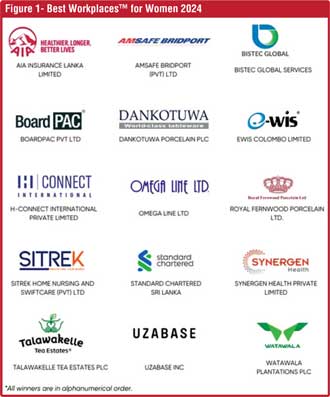
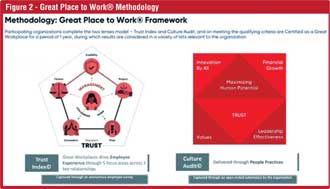
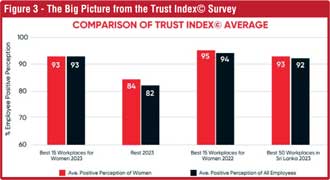
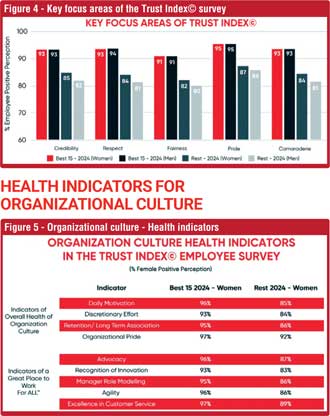

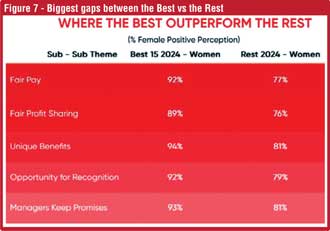
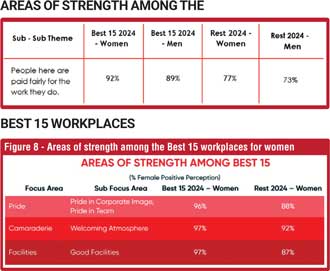
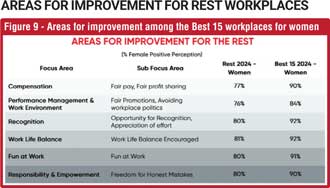
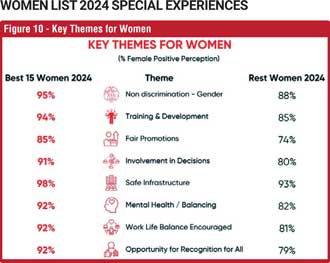
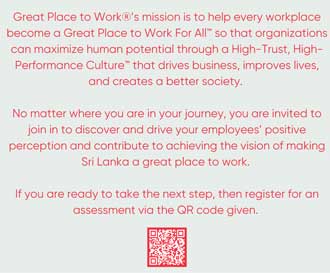
Discover Kapruka, the leading online shopping platform in Sri Lanka, where you can conveniently send Gifts and Flowers to your loved ones for any event including Valentine ’s Day. Explore a wide range of popular Shopping Categories on Kapruka, including Toys, Groceries, Electronics, Birthday Cakes, Fruits, Chocolates, Flower Bouquets, Clothing, Watches, Lingerie, Gift Sets and Jewellery. Also if you’re interested in selling with Kapruka, Partner Central by Kapruka is the best solution to start with. Moreover, through Kapruka Global Shop, you can also enjoy the convenience of purchasing products from renowned platforms like Amazon and eBay and have them delivered to Sri Lanka.
Discover Kapruka, the leading online shopping platform in Sri Lanka, where you can conveniently send Gifts and Flowers to your loved ones for any event including Valentine ’s Day. Explore a wide range of popular Shopping Categories on Kapruka, including Toys, Groceries, Electronics, Birthday Cakes, Fruits, Chocolates, Flower Bouquets, Clothing, Watches, Lingerie, Gift Sets and Jewellery. Also if you’re interested in selling with Kapruka, Partner Central by Kapruka is the best solution to start with. Moreover, through Kapruka Global Shop, you can also enjoy the convenience of purchasing products from renowned platforms like Amazon and eBay and have them delivered to Sri Lanka.